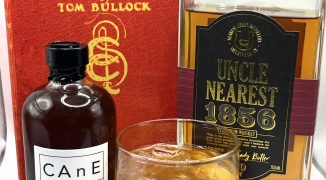Whether you’re entering a cocktail contest, writing down new recipes for your bar staff, or sending a recipe to a publication, it’s important to write clear recipes that are easily recreated by your intended audience. We caught up with several recipe writing veterans for their advice.
Assume ignorance
For Gaz Regan, bartender and author of many books, including “The Joy of Mixology,” it’s important to assume the recipe reader knows nothing. “Think that the person who is going to read it is a complete moron,” he says. “You’ll have to hold their hand and walk them through every single step of the recipe, explaining it as though you are talking to a 10-year-old.”
Moses Laboy, beverage manager at Bottle & Bine in New York City, recalls an incident several years ago when one of his bartenders added all the ingredients to a mixing tin and shook it without ice. Now he specifies “add ice” on all of his recipes. “I’m as methodical as possible when writing my recipes,” he says. “That way, they’re completely foolproof, and there’s no reading in between the lines. If you follow these instructions precisely then you’re going to get the outcome that I intended.”
It’s also a good idea to break down a technique that might be unfamiliar (Laboy recently included a short guide to swizzling on his endnotes).
Be specific
If you send Nicholas Bennett, head bartender at Porchlight in New York City, a cocktail recipe, be sure you specify the brand of your spirits. “There are so many different styles of gin out there, so many different styles of tequila and mezcal, if you don’t add the specifics, someone’s going to assume that it’s one and someone might assume that it’s another, and then your recipe at the bar is going to be inconsistent.”
Kara Newman, spirits editor at Wine Enthusiast and author of Stir. Shake. Sip., gets a lot of recipes from bartenders which she hopes to communicate to the home bartender. “It’s a process trying to make sure that it works and it translates and it’s something that could be duplicated at home without being overly complicated,” she says. One of her pet peeves? When people say “cocktail glass” instead of specifying one specifically. A coupe versus a martini glass makes a big difference in presentation.
All of the experts I spoke to suggested that the garnish be listed with the other ingredients, and treated very specifically. Don’t say garnish with lime, when you mean a lime wheel, for example.
Add your personality
Be sure you’ve added a name to your drink. “You want it to be something fun or something descriptive so people know what they’re getting into,” says Newman.
Be sure that you’re giving credit to original recipe creators, even if you’ve tweaked it a bit, in your head or endnotes. If you’re the original creator, be sure to specify that, too.
The head and endnotes are also a great place to talk a little bit about why this drink is special, and let the reader have a taste of the experience they might have chatting with you over the bar. “You can’t get a personality from reading the recipe,” says Regan. “It just puts a human face onto that recipe. When I teach [recipe writing] in Cocktails in the Country (his cocktail workshops run 10 times per year) I have had occasion to have a few people who are judges of competitions. They all have agreed with me, they look to see something personal.”
Know your audience
As an editor for a consumer publication, Newman isn’t a huge fan of what she calls “first you do” recipes, which require one or more sub recipes to be made before the drink can be constructed. “They get so impossible to ever duplicate at home,” she says. “It would take you hours to make all these custom ingredients.”
But for a cocktail competition, the sky might be the limit. “People will bend over backwards to make the recipe that you want them to make,” says Bennett. “They will make those syrups the way that you want them, as long as they know how you want them made.” He cautions cocktail competition submitters to think about whether they update any of their ingredients, cutting agave with water, or richening it with sugar, for example. If the competition judges can’t make the drink you intended, it’s less likely to stand out.
If you’re crafting a recipe for your bar team, you might have your own shorthand. When Bennett has a particularly tricky garnish or drink construction, he’s started to add pictures to his staff bar book, for reference. Find what works best for your team.
Double check
It never hurts to have an extra eye on things before you send them out. Have a fellow bartender take a look, or take a page from Laboy’s book. “Anything that I write I have my wife double check,” he says.
Whatever your venue for recipe writing, these insights should get you started, behind the bar, in a publication, or for competition.





